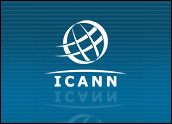
The appendage of the letter “i” to a word with the intent of creating an icon is silly. Momentary, short-term fame and glory may be possible, but it is a very dubious tactic for creating a long-lasting, global iconic mark. What makes an icon is the exclusive longevity of its unique name. That’s why Rolex works better than iWatch, and Panasonic beats iTV.
Terms like “interactive,” “portable” and “device” led to the name “iPod.” Now there’s a race to ingrain the letter “i” into just about every product category, from iCell to iCar, from iBank to iBrick to iCopy — and an infinite number of additional possibilities. Feeble minds somehow gravitate toward the copying process and feel secure jumping on the happy-go-lucky bandwagon, rather than taking an original approach.
Six Feet Under
Branding agencies feel very comfortable announcing names like “iLock,” “iGrass” or “iTravel” to captive focus group audiences. The codependent participants often respond ecstatically to these so-called brilliant name ideas, but most of them do not survive to the next season.
Another short-lived craze — adding the letter “e” to convey “electronic” — was a huge fad, pursued originally by the electronic wizards and later adopted by the real copycats like eSteel and eLumber or eCement. Most of them are now in the eCemetery. Millions of dollars were wasted by each such copycat as they danced to these expensive loony e-tunes.
There is nothing wrong with being wildly original, gutsy and, at times, even silly — provided you have a long-term strategy to protect your intellectual property assets. “Yahoo,” “Google,” and many other unusual, light-hearted names are far preferable to something overly rigid that attempts to be unique at any cost — like “EXZIXIVENT Systems,” for example.
In any case, corporations that are actively engaged in playing competitive war games in the marketplace with the aim of advancing their flotillas of new name-brand ships must arm themselves with solid intellectual property protection and carefully plan their strategies. Accidental naming doesn’t work.
At a time when a little Google research is all that’s needed to find out who owns what trademark and how many others are using a similar name, it is amazing that billion-dollar companies spending millions on promotional campaigns still get caught up in these iStupid games.
Apple Computer is still recovering from battle fatigue from its long and bitter dispute with The Beatles over use of the “Apple” name in connection with music sales. After paying huge undisclosed settlements over naming rights, it has now gotten into other iSoups.
Silicon Valley has a long history of naming fiascoes, as the same brilliant engineers and high-tech wizards who create remarkable products have often missed out on matters of iconization.
We have now entered a time when cyber-branding shrinks the globe by the second, and only professionally structured corporate images and name identities have a chance to play the real marketing and branding games.
Just Prove It
If you have a super brand, then let the whole world see it. If you have absolute 100 percent ownership of that brand, prove it. Proving absolute ownership requires only that a search on Google will demonstrate how unique and one-of-a-kind a name brand is.
Today, around the world, 95 percent of brands do not have full ownership. They may have logos, unique designs, colorful executions, banners and billboards — but as long as there are far too many identical and similar names all over the marketplace, the issue of 100 percent ownership is left behind.
Global icons like Sony, Rolex and PlayStation are 100 percent owned, and all over the world there is absolutely no confusion about this whatsoever.
Therefore, without iron-clad ownership of the name identity, the organization is left holding logos and billboards — and this makes the entire advertising and marketing process nothing but an uphill and usually, losing battle.
Quick Test: A 5-Star Naming Standard Critical for 100 Percent Ownership
Your name will earn a single star for being very simple and one more for being unique. Add one if it’s highly relevant to the type and style of your business, plus another if you have a globally protected trademark system in place. Lastly, add a star if your name has an identical dot-com associated with it for cyber-branding — that will let you take a ride on the global e-commerce highway.
Now that you have five stars, you can enjoy a great image and name identity profile, as you have the freedom to take your brand into foreign countries without fear or worry, and you have long-term brand equity already enhancing your persona. You are on the right track toward having a great icon.
With four stars, obviously, something is lacking. Therefore, the cost of pushing the message is high, and progress is slow. With three stars, the limitations can be very obvious. The struggle keeps the brand spinning, and most efforts are wasted. With two stars, the brand is seriously damaged, and all the effort of advertising is futile. You have a disconnected relationship with the customer and consequent marketing confusion. Regional or global expansion is a serious hurdle. With one star, the brand is dying, and will not survive. With no stars — there is no point in continuing.
Today, less than 1 percent of brands have five stars. The other 99 percent barely earn one or two, indicating that the current state of branding is dismal. While big corporations all over the world are convinced that they have the best name brands, most have a tendency to overlook key branding issues. Ad agencies continue to iSpend with seemingly unlimited iBudgets — and that results in a big iProblem. The key requirement for successful branding is to attain clear 100 percent brand ownership.
Conclusion: There are some very serious and very bright projects out there, under the guidance of bright teams, but there is a serious disconnection when it comes to long-term and long-lasting naming architecture and branding strategies. What is most critically lacking are the pillars of branding for iconization, leading to 100 percent ownership.
Naseem Javed is recognized as a world authority on Corporate Image and Global Cyber-Branding. Author of Naming for Power, he introduced The Laws of Corporate Naming in the 80s and also foundedABC Namebank, a consultancy established in New York and Toronto a quarter century ago. Currently, he is on a lecture tour in Asia and can be reached at[email protected].










































Social Media
See all Social Media